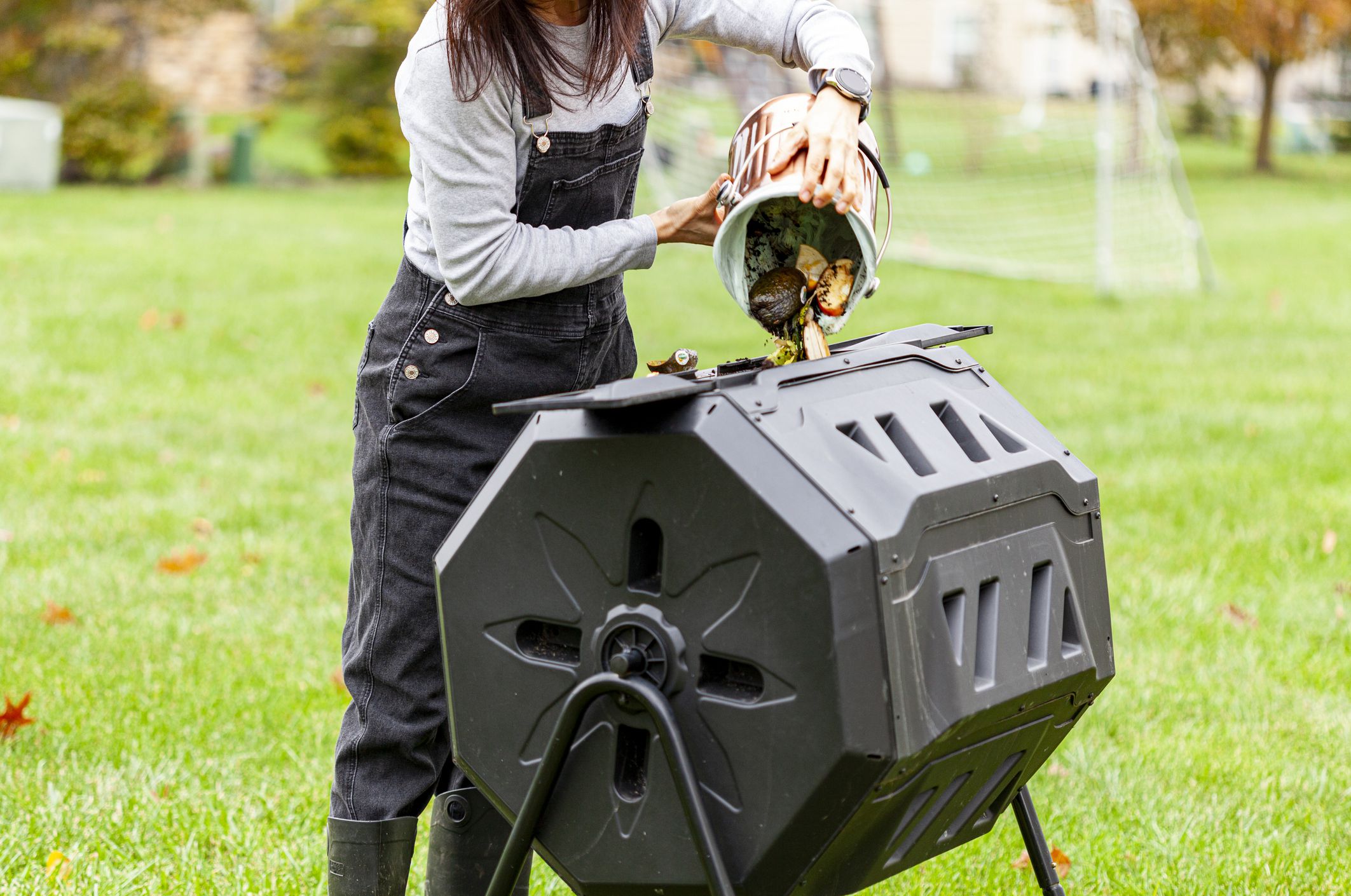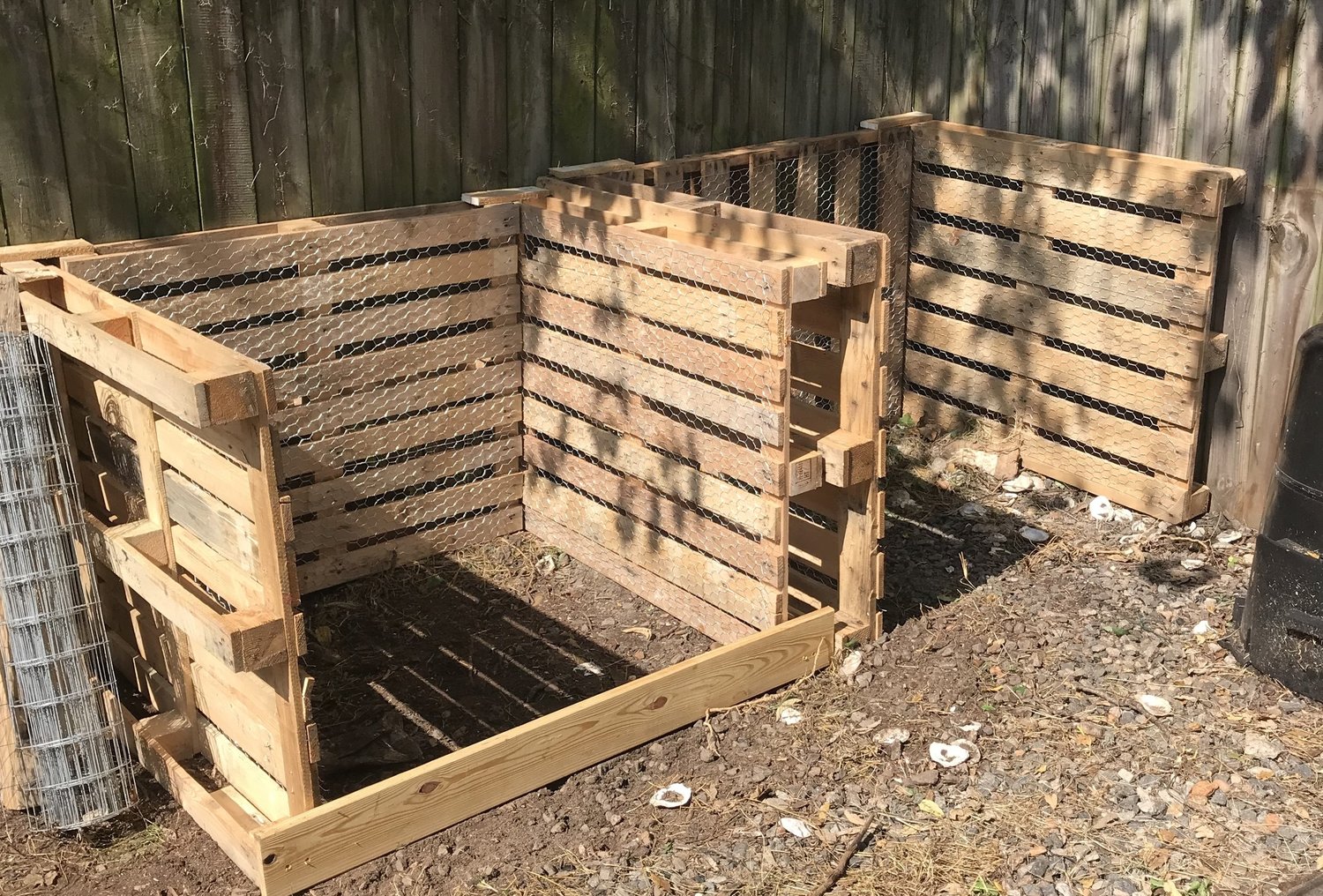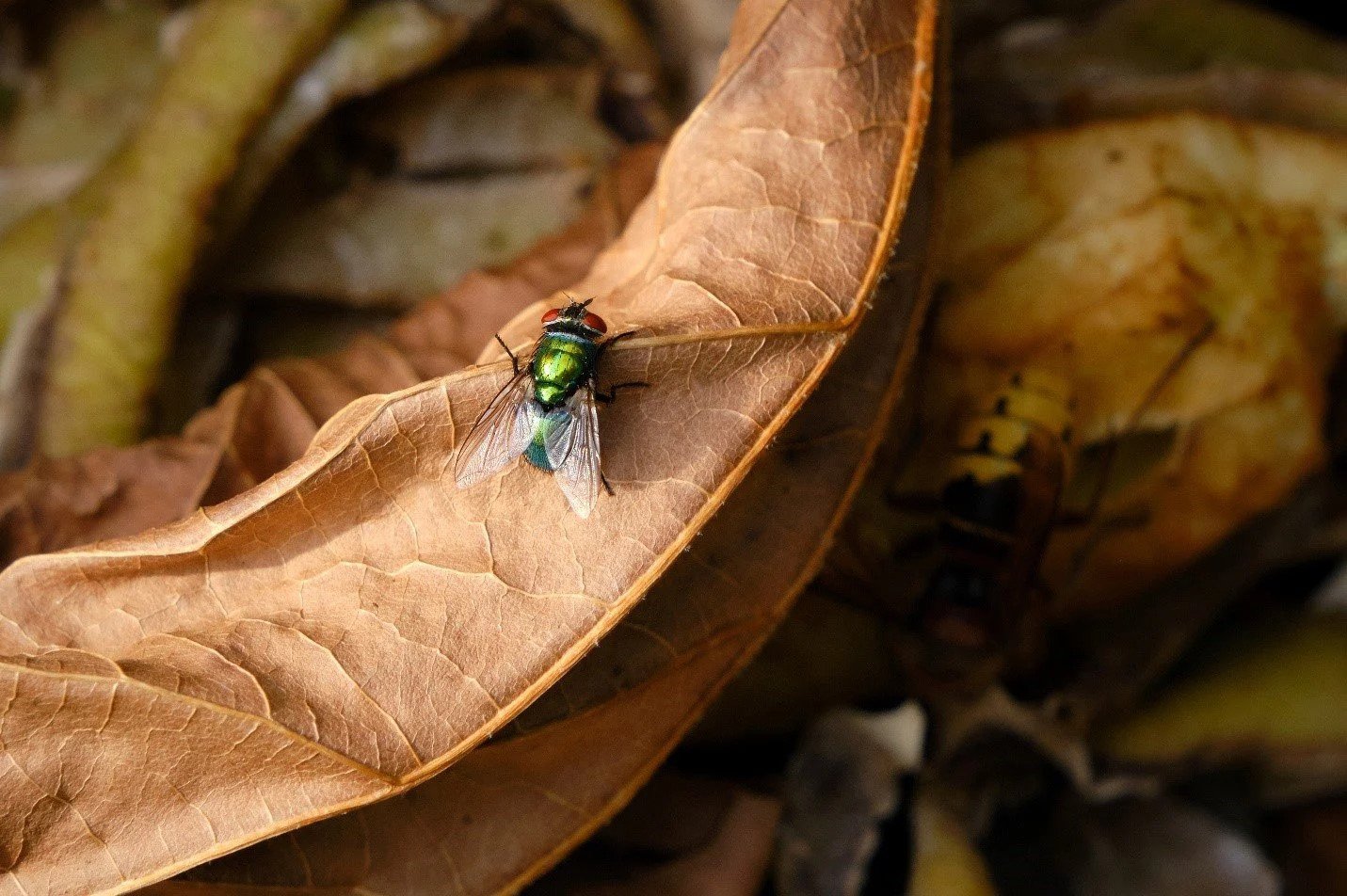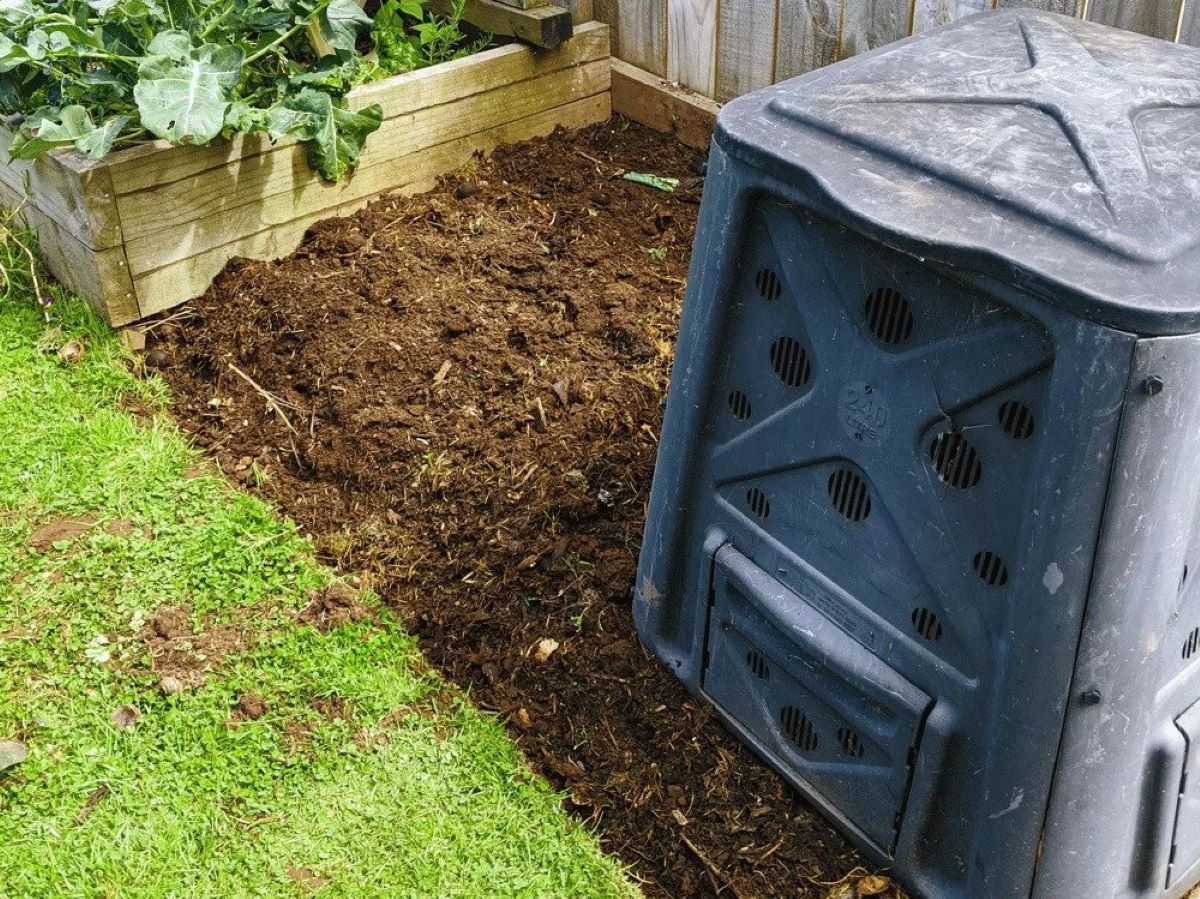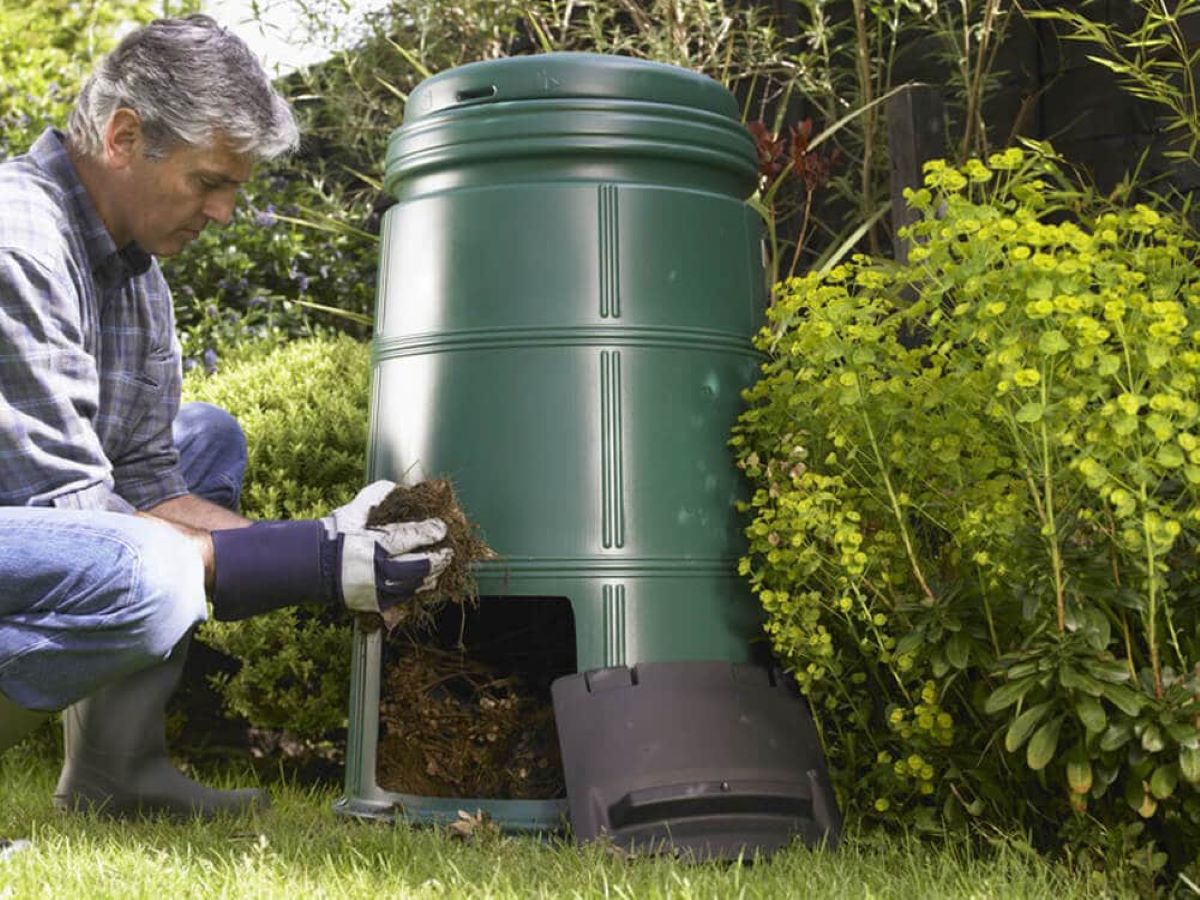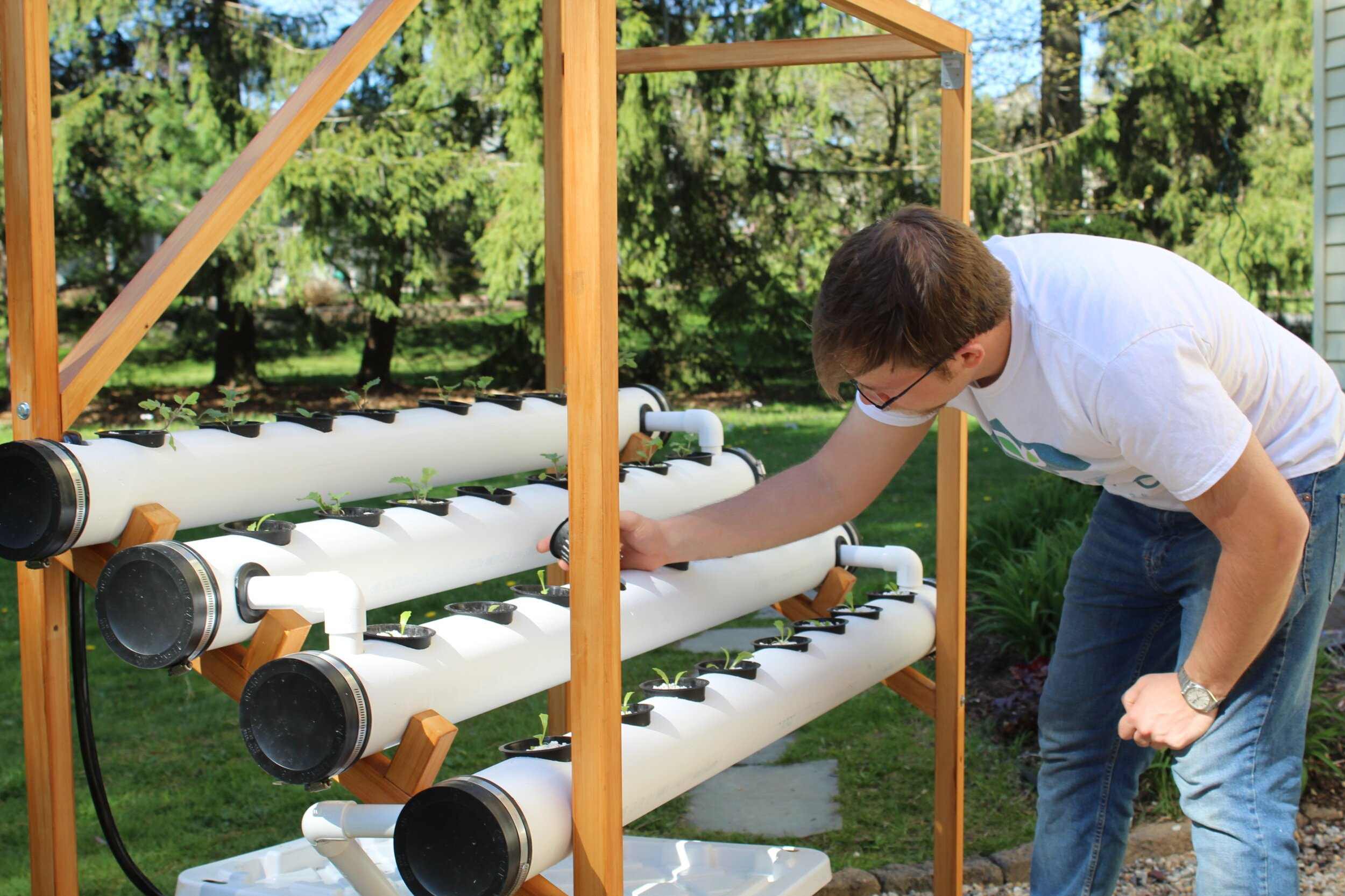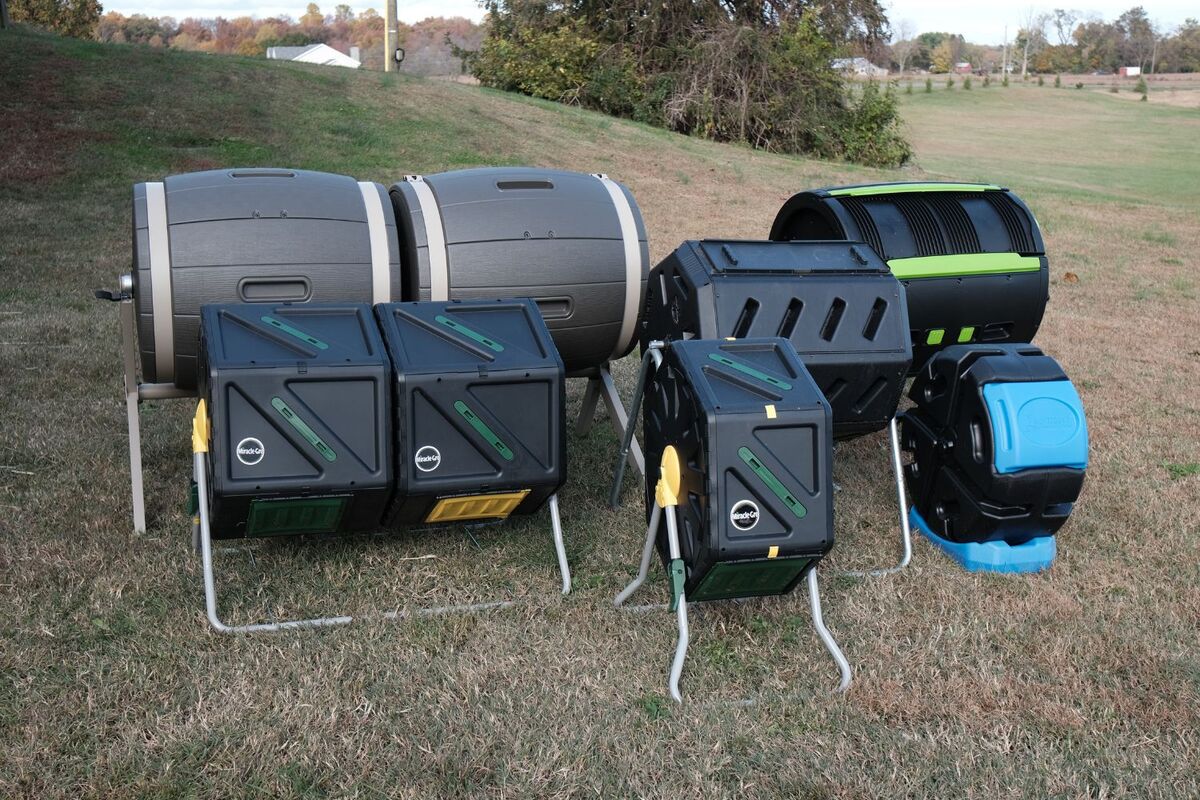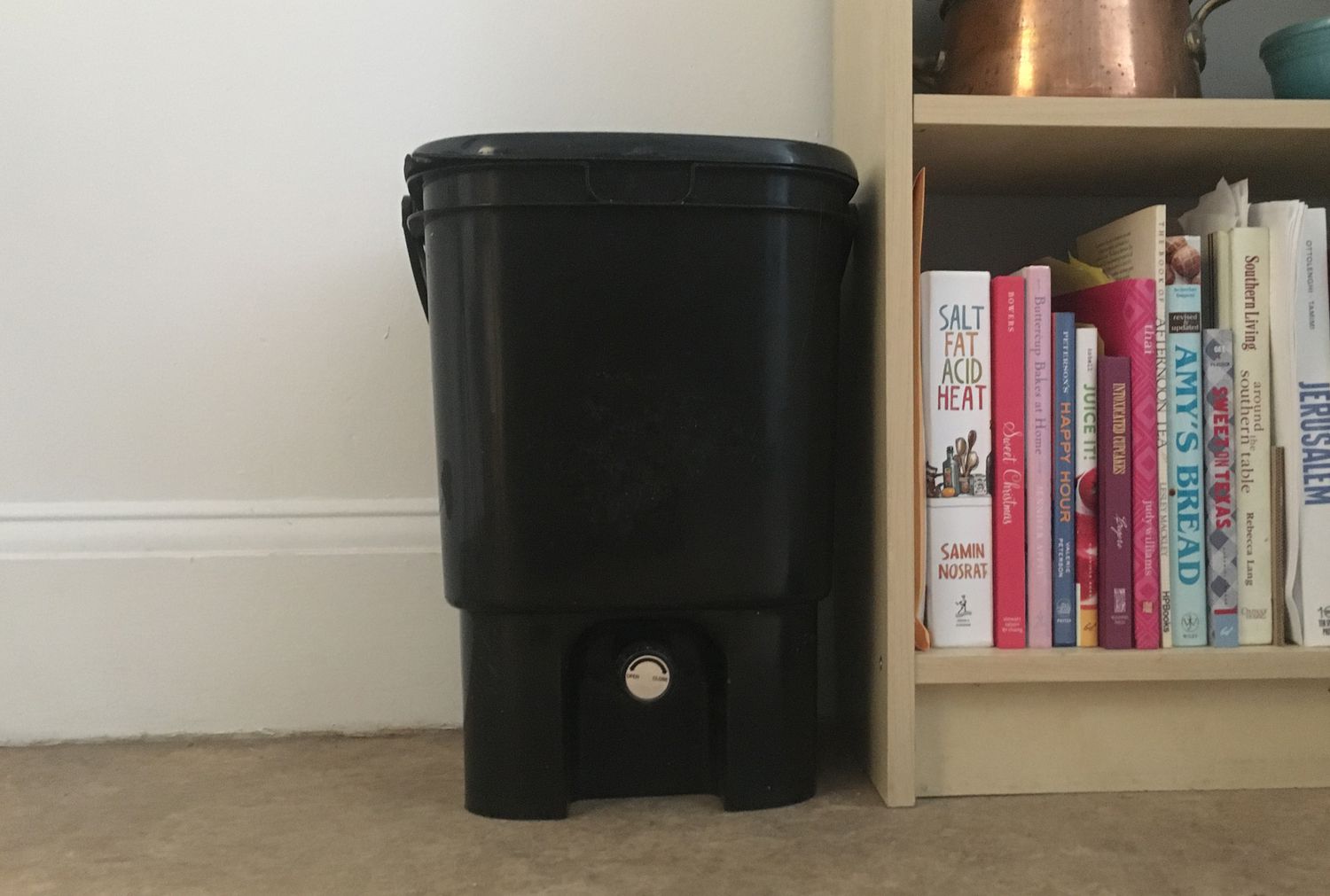Home>Gardening Tips and Tricks>Eco-Friendly Gardening>How To Maintain A Compost Bin
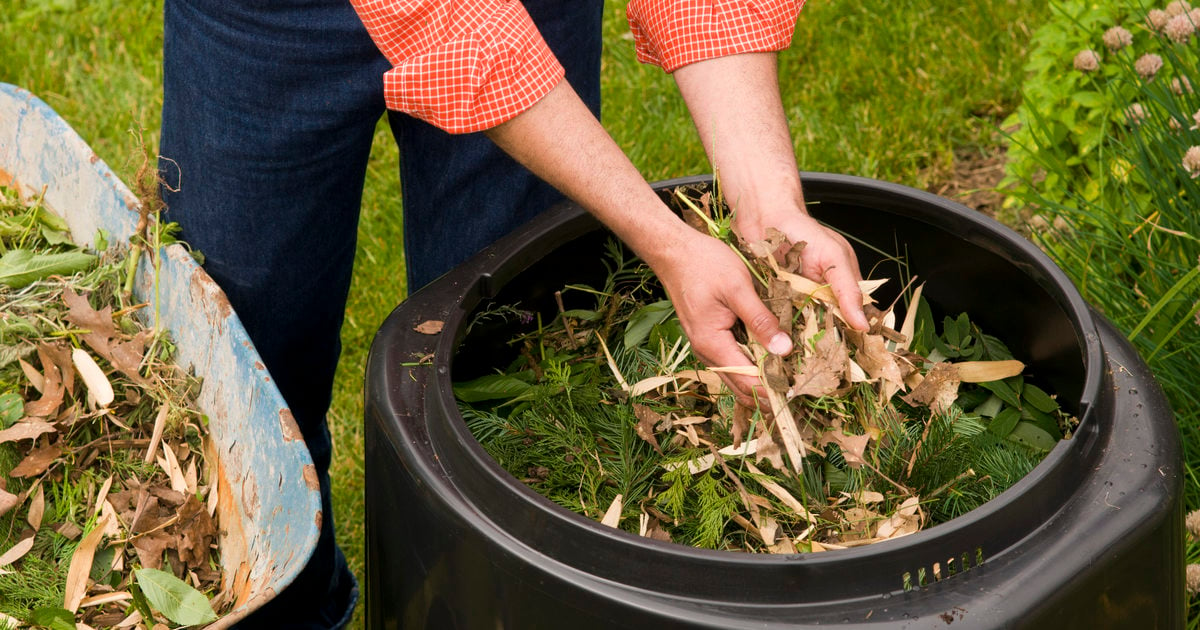

Eco-Friendly Gardening
How To Maintain A Compost Bin
Modified: February 9, 2024
Learn how to maintain a compost bin for eco-friendly gardening. Discover tips for composting effectively and reducing waste in your garden.
(Many of the links in this article redirect to a specific reviewed product. Your purchase of these products through affiliate links helps to generate commission for Chicagolandgardening.com, at no extra cost. Learn more)
Table of Contents
Introduction
Composting is a simple yet powerful way to reduce waste, nourish your garden, and play a part in promoting eco-friendly practices. By converting organic materials like kitchen scraps, yard trimmings, and other biodegradable waste into nutrient-rich compost, you can create a sustainable and eco-friendly garden. Composting not only helps divert waste from landfills but also enhances soil fertility and promotes healthier plant growth.
In this comprehensive guide, we will walk you through the process of setting up and maintaining a compost bin for your eco-friendly gardening needs. We will cover everything from choosing the right location and selecting the appropriate compost bin to gathering compost materials, managing moisture levels, and troubleshooting common issues. With the right knowledge and a little effort, you’ll be able to produce high-quality compost that will transform your garden into a thriving oasis.
Whether you’re a seasoned gardener or just starting out, composting is a rewarding practice that allows you to give back to the environment while reaping the benefits of nutrient-rich soil. So, let’s dive in and learn how to maintain a compost bin that will not only reduce your carbon footprint but also provide numerous benefits for your garden.
Choosing the Right Location
When it comes to setting up your compost bin, choosing the right location is crucial for its success. Ideally, you’ll want to place your compost bin in a spot that is convenient yet strategically chosen to maximize its efficiency. Here are a few factors to consider when selecting a location:
- Sunlight: Place your compost bin in an area that receives a moderate amount of sunlight. While some sunlight is essential for the decomposition process, excessive exposure can dry out the compost. Partial shade is beneficial in warmer climates to prevent overheating.
- Accessibility: Position the compost bin in a location that is easily accessible for adding materials and turning the pile. This will make it more convenient for you to maintain your compost without much hassle.
- Drainage: Ensure that the area has proper drainage to prevent waterlogging. Excessive moisture can slow down decomposition and create an unpleasant odor. If your selected location lacks natural drainage, consider using a raised platform or a well-drained surface for the compost bin.
- Aesthetic Considerations: While functionality should be the primary factor in choosing the location, considering the aesthetics is also important. If you have limited space or want to maintain the visual appeal of your garden, consider selecting a discreet location or using an enclosed compost bin that blends seamlessly with its surroundings.
By considering these factors, you can choose a suitable location for your compost bin that ensures optimal decomposition and easy maintenance. Remember, the right location will contribute to the overall success of your composting efforts and ultimately benefit your garden.
Selecting the Compost Bin
Choosing the right compost bin is essential for effective composting. There are several options available in the market, each with its own advantages and considerations. Here are a few factors to keep in mind when selecting a compost bin:
- Size: Consider the amount of compostable material you generate on a regular basis. If you have a large garden or generate a significant amount of kitchen waste, a larger compost bin will be more suitable. However, for smaller gardens or limited space, a compact bin may be a better choice.
- Design: Compost bins come in various designs, including tumbler-style bins, stationary bins, and compost piles. Tumbler-style bins are convenient for easy turning, while stationary bins offer stability and ease of use. Compost piles are suitable for larger spaces and provide a more DIY approach. Choose a design that aligns with your preferences and needs.
- Material: Compost bins are typically made of plastic, wood, or metal. Plastic bins are lightweight, affordable, and easy to maintain. Wood bins blend well with outdoor settings and provide good insulation. Metal bins are durable but may be more expensive. Consider the material that suits your budget, aesthetics, and durability requirements.
- Aeration and Drainage: Proper aeration and drainage are crucial for successful composting. Look for compost bins with adequate ventilation and drainage holes to ensure optimal airflow and moisture control.
- Accessibility: Consider features that make it easy to add materials and access the finished compost. Some bins have hatches or doors for convenient access, while others may require manual removal of the compost.
Ultimately, the choice of a compost bin depends on your specific needs and preferences. Consider the size of your space, the volume of compostable material you generate, and the level of convenience you desire. Remember, a well-chosen compost bin will contribute to the efficient and hassle-free process of composting, leading to a healthier, more sustainable garden.
Gathering Compost Materials
Gathering the right compost materials is essential for creating a nutrient-rich and well-balanced compost pile. The key is to include a mix of organic materials that provide the necessary nutrients, moisture, and airflow for the composting process. Here are some common compost materials that you can collect:
- Kitchen Scraps: Collect fruit and vegetable peels, coffee grounds, tea bags, eggshells, and other food scraps. Avoid adding meat, dairy, and oily items as they can attract pests and slow down the decomposition process.
- Yard Waste: Gather grass clippings, leaves, small branches, and plant trimmings from your garden. Be mindful of avoiding invasive or diseased plants, as they can negatively impact the compost.
- Shredded Paper and Cardboard: Use shredded newspaper, cardboard, and paper towel rolls as excellent sources of carbon in your compost. Avoid using glossy or colored paper, as they may contain chemicals that hinder decomposition.
- Straw or Hay: These materials add structure to the compost pile and help with moisture regulation. Straw and untreated hay are ideal choices for adding carbon to your compost.
- Wood Ash: If you have a fireplace or wood-burning stove, save the wood ash to sprinkle into your compost. Wood ash is a rich source of potassium and can help balance the pH levels in acidic compost.
- Garden Debris: Small weeds, spent plants, and flowers from your garden can be added to the compost pile. Avoid using weeds with mature seeds or plants treated with pesticides.
It’s important to maintain a good balance between “green” nitrogen-rich materials and “brown” carbon-rich materials. Aim for a ratio of approximately 3 parts brown materials to 1 part green materials by volume. This balance will provide the optimal conditions for decomposition and ensure a well-rounded compost.
Remember to avoid adding any non-biodegradable or toxic materials, such as plastics, metals, or pet waste, as they can harm the composting process and contaminate the soil.
By gathering a diverse range of compost materials, you’ll create a nutrient-dense mixture that will enrich your soil and support the growth of healthy plants in your eco-friendly garden.
Layering the Compost Ingredients
Proper layering of compost ingredients is crucial for creating a well-balanced and efficient compost pile. Layering helps create an optimal environment for decomposition and ensures the right mix of nutrients and airflow. Here are some guidelines for layering compost ingredients:
- Start with a Base: Begin by creating a layer of twigs or small branches at the bottom of your compost bin. This base layer helps with drainage and promotes airflow in the pile.
- Add Brown Materials: Layer brown, carbon-rich materials such as dried leaves, straw, shredded paper, or cardboard on top of the base. This provides a good foundation for the compost pile and helps create air pockets for oxygen circulation.
- Follow with Green Materials: Add green, nitrogen-rich materials such as kitchen scraps, grass clippings, or fresh plant trimmings on top of the brown layer. This layer adds moisture and introduces beneficial microorganisms that aid in the decomposition process.
- Alternate Layers: Continue alternating between brown and green layers as you add more compost materials. This alternating pattern helps maintain the right balance of carbon and nitrogen and ensures a well-mixed compost pile.
- Maintain Moisture Levels: Spray each layer lightly with water to maintain a moist but not overly wet environment. Moisture is essential for the decomposition process and helps the microorganisms break down the organic matter.
- Avoid Compaction: As you add layers, avoid compacting or pressing down on the materials. Compaction can limit airflow and slow down the decomposition process. Instead, gently pat down each layer to ensure even distribution.
Remember to end with a layer of brown materials to help cover the compost pile and regulate moisture levels. This top layer acts as insulation and helps prevent excessive drying or waterlogging.
Continue adding layers of compost materials as they become available, making sure to maintain a proper balance and moisture levels throughout the process. Layering your compost ingredients will promote efficient decomposition and result in high-quality compost that nourishes your garden and supports healthy plant growth.
Managing Moisture Levels
Maintaining proper moisture levels is essential for a healthy and productive compost pile. The right amount of moisture creates an ideal environment for microorganisms to break down organic matter efficiently. Here are some tips for managing moisture levels in your compost:
- Monitor Moisture: Check the moisture content of your compost regularly by squeezing a handful of the mixture. It should feel like a damp sponge, with enough moisture to hold its shape without dripping.
- Add Water: If your compost feels dry, add water to moisten it. Use a watering can or sprayer to evenly distribute water throughout the pile. Be cautious not to overwater, as excessive moisture can slow down the decomposition process.
- Avoid Waterlogging: On the other hand, if your compost feels overly wet or waterlogged, add dry carbon-rich materials such as shredded paper or dried leaves to absorb excess moisture. Turning the compost pile can help improve aeration and assist in drying out the pile if it becomes too wet.
- Cover the Compost: Use a breathable cover such as a tarp or burlap to protect the compost pile from heavy rain or excessive sun. The cover helps regulate moisture levels by preventing the pile from drying out or becoming waterlogged.
- Consider Location: If your compost bin is exposed to heavy rainfall, consider moving it to a sheltered spot or using a covered bin to prevent excessive moisture accumulation.
- Aerate the Pile: Regularly turning or mixing the compost pile helps ensure even moisture distribution. Turning the pile also allows for better aeration, which prevents the compost from becoming too compacted and promotes decomposition.
Remember, the goal is to maintain a moist but well-drained compost pile. Moisture is essential for the composting process, as it supports the growth of beneficial microorganisms that break down organic matter. By actively managing moisture levels, you can create a thriving compost pile that transforms waste into nutrient-rich compost for your garden.
Turning the Compost Pile
Turning the compost pile is an important maintenance task that helps accelerate the decomposition process and ensures a well-balanced compost. Turning the pile introduces oxygen, mixes the compost ingredients, and promotes even distribution of moisture and nutrients. Here’s how to effectively turn your compost pile:
- Frequency: Aim to turn your compost pile every 1-2 weeks. Turning too frequently may disrupt the decomposition process, while turning too infrequently can slow down the process.
- Tools: Use a garden fork, pitchfork, or compost turning tool to gently aerate and mix the compost pile. Avoid using tools with sharp blades that may damage beneficial organisms in the compost.
- Layer Shuffling: When turning the pile, make sure to move the outer materials to the center of the pile and bring the inner materials to the outside. This shuffling helps evenly distribute moisture and ensures that all parts of the compost pile decompose uniformly.
- Breaking up Clumps: If you notice any clumps or compacted areas, break them up with the garden fork or your hands. This improves airflow and prevents the formation of anaerobic pockets within the compost pile.
- Moisture Check: While turning the pile, pay attention to the moisture levels. If the pile feels dry, add water to moisten it. If it feels too wet, add dry carbon-rich materials to absorb excess moisture.
- Observe the Decomposition Process: As you turn the compost pile, take note of how the materials are decomposing. Look for signs of active decomposition, such as a dark, crumbly texture and an earthy smell. If the pile is not decomposing properly, adjust the moisture levels or balance the brown and green materials.
Remember to cover the compost pile after turning it to retain moisture and promote consistent decomposition. Regularly turning the compost pile not only accelerates the composting process but also helps keep odors in check and prevents the formation of anaerobic conditions that lead to unpleasant smells.
Turning the compost pile is a key step in maintaining a healthy composting system. By incorporating this practice into your routine, you’ll ensure the production of high-quality compost that benefits your garden and promotes sustainable gardening practices.
Troubleshooting Common Issues
Composting is a natural process, and like any natural process, it can sometimes encounter challenges. Fortunately, most common issues can be easily resolved with a little troubleshooting. Here are some common problems you may encounter while maintaining your compost pile and how to address them:
- Unpleasant Odor: A strong, foul smell is often an indicator of improper aeration or excessive moisture. To address this, turn the compost pile to improve airflow and mix in dry carbon-rich materials like shredded paper or dried leaves to absorb excess moisture.
- Slow Decomposition: If your compost is taking longer than expected to decompose, it may indicate an imbalance in the carbon-to-nitrogen ratio or insufficient moisture. Adjust the ratio by adding more brown materials for carbon or more green materials for nitrogen. Ensure the compost pile is adequately moist but not overly wet.
- Pest Infestation: Pests like fruit flies or ants may be attracted to your compost pile if there are exposed food scraps. To prevent this, bury kitchen scraps under a layer of brown materials or use a covered compost bin to minimize access for pests.
- Weed Seeds or Plant Diseases: If weeds or plant diseases start sprouting from your compost, it indicates that the pile did not reach high enough temperatures to kill the seeds or pathogens. Increase the temperature by adding more nitrogen-rich materials and turning the pile more frequently.
- Insufficient Heat: If your compost pile is not generating enough heat, it may be due to insufficient nitrogen or inadequate insulation. Add more green materials or nitrogen-rich compost activators to boost heat generation. Consider insulating the compost bin with hay, straw, or old blankets during colder months.
- Overheating: On the other hand, if your compost pile is becoming too hot, it could be a result of too much nitrogen or inadequate aeration. Add more brown materials or carbon-rich compost ingredients to cool down the pile, and ensure proper turning to promote airflow.
Remember that composting is a natural process, and it may take some time and experimentation to find the right balance. Regularly monitor your compost pile, make adjustments as needed, and be patient. With time and practice, you’ll overcome any issues and create a thriving compost that nourishes your garden.
Harvesting and Using Compost
After weeks or months of patiently tending to your compost pile, it’s time to reap the rewards of your efforts. Harvesting and using the rich, dark compost you’ve produced is an exciting step in your eco-friendly gardening journey. Here’s how you can do it:
- Wait for Maturation: Before harvesting your compost, ensure that it has fully decomposed and reached a dark, crumbly texture with an earthy smell. This typically takes anywhere from two to six months, depending on the materials used and the environmental conditions.
- Sift or Screen the Compost: To separate any larger, undecomposed materials or debris from your compost, you can sift it through a mesh screen or use a compost sieve. This step results in a finer, more uniform texture that’s easier to incorporate into your garden soil or use in potting mixes.
- Apply to the Garden: Spread the harvested compost over your garden beds, mixing it thoroughly into the soil. The compost will enrich the soil with essential nutrients, improve its structure and drainage, and enhance its ability to retain moisture.
- Top-Dressing: For existing plants, you can apply a layer of compost around their base as a top-dressing. This serves as a slow-release fertilizer, providing nutrients to the plants over time. Be sure to keep the compost a few inches away from the stems to prevent against rotting.
- Mulching: Use compost as a natural mulch to suppress weeds, conserve moisture, and improve the health of your garden. Apply a layer of compost around your plants, leaving a few inches of space around the stems, and spread it evenly across the soil surface.
- Potting Mix: Mix compost with potting soil to create a nutrient-rich medium for your indoor and outdoor potted plants. Incorporating compost into your potting mixes improves soil structure, water retention, and nutrient availability for healthy plant growth.
As you use your compost in the garden, observe the positive changes it brings to your plants. The rich humus will support vigorous growth, increase resistance to disease and pests, and contribute to overall soil health in an eco-friendly and sustainable manner.
Remember, composting is an ongoing process, and you can continue adding fresh materials to your compost pile even as you harvest and use the finished compost. This cyclical approach ensures a continuous supply of nutrient-rich compost for your garden year after year.
Conclusion
Composting is a valuable practice that not only reduces waste but also enriches the soil and promotes eco-friendly gardening. Through the careful selection of a compost bin, proper layering of compost materials, regular turning, and effective moisture management, you can create nutrient-rich compost to nourish your garden and support sustainable plant growth.
By choosing the right location for your compost bin, ensuring proper aeration and drainage, and gathering a diverse range of compost materials, you lay the foundation for a successful composting process. Managing moisture levels, turning the compost pile regularly, and troubleshooting common issues help maintain an optimal environment for decomposition.
When it’s time to harvest your compost, the rewards are plentiful. Applying the mature compost to your garden beds, using it as top-dressing or mulch, and combining it with potting soil for potted plants all contribute to improved soil health, enhanced plant growth, and reduced reliance on synthetic fertilizers.
Remember, composting is a cyclical process, and you can continue to add to your compost pile even after you’ve harvested and used the compost. With time and practice, you’ll refine your composting skills and witness the positive impact it has on your garden and the environment.
So, embrace the power of eco-friendly gardening through composting and take pride in your efforts to reduce waste and nurture the earth. Get started today and enjoy the bountiful benefits that composting brings to your garden and the planet.
